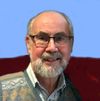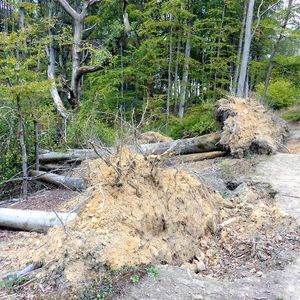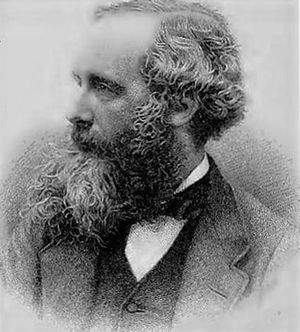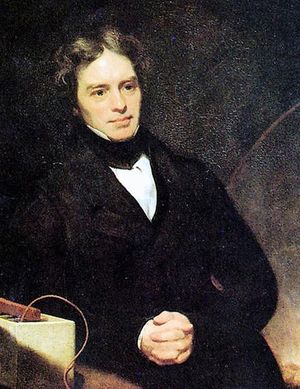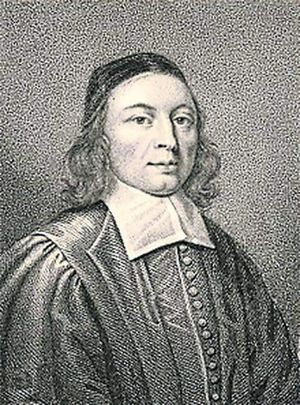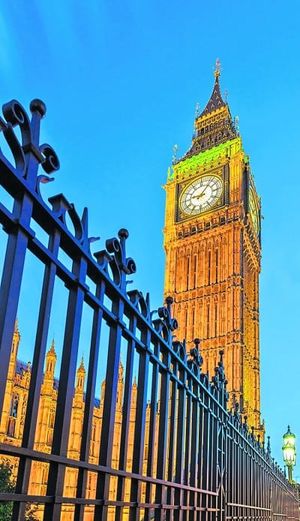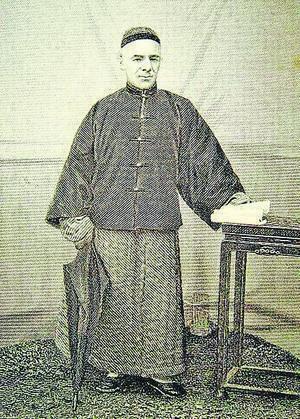The substance of all riches;the life of Hannah Moreby Nigel T. FaithfullHannah More (1745-1833) was a remarkable woman and the friend of both John Newton and William Wilberforce. In March 2007 the Royal Mail issued a 72p stamp to acknowledge her contribution to the abolition of slavery. More published eleven volumes of writings – plays, stories, poems, tracts and religious and moral teaching.She was born on 2 February 1745 in a small cottage at Fishponds, now a suburb of Bristol. She was the second-youngest of the five daughters of Jacob More, master of Fishponds free school. At the age of twelve, along with sisters Sarah and Martha, the precocious Hannah attended a girls’ school established near Bristol College Green by her eldest sister Mary.By the age of seventeen she had published her first play, The search after happiness, intended for performance by the pupils. She also joined her older sisters as a teacher. In 1767 the school moved to purpose-built premises at 43 Park Street, a prestigious location.DisappointmentThe same year she accepted a proposal of marriage from a wealthy landowner, the cousin of one of her pupils. He was William Turner of Wraxall who was twenty years her senior. His estate, Belmont, gave its name to the tune often used for Cowper’s hymn ‘There is a fountain filled with blood’.But Turner vacillated, and apparently jilted Hannah at the altar. Resuming the relationship, he twice postponed their wedding and refused to name a further date. Hannah broke off the engagement after six years of courtship.To assuage his feelings of guilt, Turner offered a large annuity, which Hannah refused. But she was later persuaded to accept a smaller settlement of £200 per annum which enabled her to maintain her independence and pursue her literary activities.She also vowed that she would never again consider marriage, to which she adhered in spite of several further proposals.To London and fameIn the winter of 1773-4, together with Sarah and Martha, she made the first of her annual visits to London. Within ten days she had met David and Eva Garrick, Elizabeth Montagu and Joshua Reynolds – who in turn introduced her to Dr Johnson and Edmund Burke. She helped Burke in his successful election campaign to become MP for Bristol.Garrick, the famous actor and impresario, staged her first play, The inflexible captive, at the Theatre Royal in Bath. In 1777, her second play, Percy, met with a rapturous response at Drury Lane theatre, Covent Garden. The play’s first edition of nearly 4000 sold out within weeks, and she made £600 in royalties. Her wit, clarity of thought, and pithy expressions made her a popular figure among the literati.Her writings always maintained a morally uplifting tone. In 1777, for example, she published Essays on various subjects, principally designed for young ladies – dealing with dissipation, conversation, education and religion. In spite of her own literary achievements, she argued for a difference between the sexes in terms of natural abilities and social roles.Garrick died in 1779, and her third play only lasted a few nights. The following year John Newton published his Cardiphonia which deeply impressed her – ‘it is full of vital, experimental religion’, she wrote.She did not meet Newton until 1787 but had come under the influence of various evangelicals including, from 1776, Lady Middleton. About this time her faith seems to have changed from a formal to a lively Christianity.Abolition of slaveryHannah More proved an ardent supporter of the anti-slavery movement, writing her poem ‘Slavery’ (1788) to publicise Wilberforce’s bill – ‘Shall Britain, where the soul of Freedom reigns, forge chains for others she herself disdains?’She subscribed to the African Institution (1807) and was nominated to the committee of the Female Anti-Slavery Society at Clifton.She met Wilberforce at Bath in the autumn of 1787 – the year he helped found the Society for the Reformation of Manners to oppose the national profanity. This struck a chord with More and he remained her lifelong friend, predeceasing her by one month.She was appalled at the manners and morals of London society, but John Wesley advised her to ‘live in the world; there is the sphere of her usefulness’. Unlike the clergy, Hannah’s reputation guaranteed her a favourable hearing in the drawing-rooms of the upper classes.Avoiding card-parties, she sought to introduce the gospel into general conversation. In 1788 she admonished the upper classes in herThoughts on the importance of the manners of the Great to general society. Its huge popularity necessitated an eighth edition by 1790, the year of the follow-up work An estimate of the religion of the fashionable world.An inevitable backlash ensued, and she was branded a killjoy and criticised for unfeminine conduct in speaking out so boldly. From the mid 1790s she directed her endeavours towards improving the education of the poor.West Country schoolsIn 1785, Hannah and her sister Martha moved to a thatched cottage at Cowslip Green near Wrington in the Mendip Hills (now Brook Lodge Farm Camping and Caravan Park). She was visited by Wilberforce and recorded in her diary on 20 August 1789: ‘W said the Cheddar cliffs “were very fine, but the poverty and distress of the people was dreadful”.’The sisters helped establish various schools, concerning which Wilberforce said, ‘If you will be at the trouble, I will be at the expense’. In fact, he contributed £100 per annum to this cause.Following the pattern set by Robert Raikes (1735-1811) of Gloucester (who founded the Sunday school movement), Hannah and Martha established a school in a rented house at Cheddar. It opened on 25 October 1789 and soon attracted 120 pupils.Other schools followed, firstly at Shipham, then eleven more by 1800 at places as far afield as Nailsea, Yatton, and Axbridge. She was warned not to visit the ruffians of Nailsea, but she rode over with her sister Patty and a gentleman escort, the latter refusing to come too close to the sturdy miners and glassblowers.Hannah boldly approached them stating her aims, and was rewarded with their support and the promise to pay sixpence a week towards the salary of the teacher. These were indeed tough times. On inquiring why two children were looking glum, Hannah was told that their mother was to be hanged for stealing bread for them.John Newton visited in autumn 1791 and spoke to the attentive Sunday schools at Shipham and Wrington, followed by ‘parlour preaching’ in the evening.The pupils were taught to read the Scriptures and learn the catechism, but writing was not a priority – in case they became dissatisfied with their lowly situation! She believed God appointed people to their individual stations in life, ‘The rich man in his castle, the poor man at his gate’. But perhaps she sometimes forgot her own humble beginnings, and how God had used her educational opportunities to further his kingdom.Picnics and penniesTo ‘train up the lower classes to habits of industry and virtue’, evening and weekday classes were established to teach sewing, knitting and spinning, while friendly societies dealt with cleanliness and Christian behaviour. Incentives were offered in the form of annual picnics, with gingerbread or pennies for the children.Hannah’s other sisters retired from their boarding school in 1789 and came to help in the general management of the work. They lived either at Wrington or their other house, one of the first to be built in Great Pulteney Street, Bath. Hannah spent her winters here because the dampness of the cottage aggravated her asthma and bronchitis.Cowslip Green was one of the first places to which Wilberforce took his new bride Barbara in 1797. Together they visited the schools at Shipham, Axbridge and Cheddar.By this time Hannah was an established member of the Clapham Circle (Sect), which included William Wilberforce, Henry Thornton, Zachary Macaulay, James Stephen, Lord Teignmouth, Charles Grant, Charles Simeon and John Venn.In 1801 Hannah and her four sisters moved to Barley Wood, a larger property they had built in Wrington and which is now an addiction treatment centre. It was to this larger thatched cottage, nestling in the hillside with panoramic views of the Mendips, that Gladstone was brought as a small boy by his mother.Such was Hannah’s fame that she never found the retirement here that she sought. Difficult times followed, with the deaths of Mary (1813), Elizabeth (1816) and Sarah (1817).Yet in 1819, she and Patty managed to entertain a host of guests, including120 ladies and gentlemen, at a garden party – serving dinner at a flower-decked table with local children dressed as white-robed nymphs. Patty died later the same year.OppositionLocal resentment towards Hannah’s religious and educational work came from several quarters. The landowners feared that education would make their workers lazy. The clergy were also unhappy because Hannah’s philanthropic activities showed up their lack of pastoral care. Since they were often absent, the sick went unvisited and children were buried without a funeral service.She also introduced gospel sermons into her classes and weekly prayer meetings, bringing stinging accusations of Methodism and endangering the Church of England by schism. The preaching was done by nine evangelical clergymen, contemptuously called ‘Hannah More’s nine-pins’.One rector wrote scurrilous attacks on the ‘She-Bishop’, and school windows were smashed. This was the so-called Blagdon Controversy of 1800-03 which resulted in the closure of Blagdon school in order to protect her other schools. She wrote, ‘My conduct has been attacked with a wantonness of cruelty which, in civilized places, few persons, especially of my sex, have been called to suffer’.Books and tractsAlarmed at the spread of atheism and political radicalism – promoted by the French Revolution and Tom Paine’s Rights of man – she replied with a book under the nom de plume Will Chip, a country carpenter. The work was entitled Village politics: addressed to all the mechanics, journeymen, and day labourers in Great Britain (1792).She also wrote 49 of a total of 114 monthly Cheap repository tracts which were sold by booksellers and pedlars throughout the land. They proved so popular that over two million were sold in the first year, including exports to the United States, Sierra Leone and the West Indies.This paved the way for the founding of the Religious Tract Society in 1799. Three further books followed,Practical piety (1811), Christian morals (1813), and Essay on the character and practical writings of St Paul (1815).William JayWilliam Jay, a dissenting minister, was called to the Argyle Chapel in Bath in 1791, and soon became acquainted with Hannah More. Hannah made him welcome and he ‘met with very interesting company, though none was so attractive and engaging as her own’. He describes her in his autobiography as an eminent, excellent and extraordinary woman, ‘free from all direct and indirect attempts at display, so that no one in the company was terrified into silence by a profusion of talent, but each was rather encouraged to speak’.The nearest evangelical pulpit in the Church of England was two miles away at Bath Easton, where Jay’s father-in law was the incumbent. When Newton and Scott visited Bath, this became the only pulpit to which they had access.Jay recalls that Hannah More ‘had begun increasingly to appreciate and relish a certain kind of preaching, as to doctrine, [and] she made no scruple to sacrifice a little of the Episcopalian, and attended frequently and commonly in Argyle Chapel’.On one occasion she was so spiritually moved that she stayed and partook of the non-conformist Lord’s Supper. The Anti-Jacobin Review and others alleged that this was her common practice, and she had to get Jay to certify that it was a single deed.Jay records that after the Blagdon Controversy she gave up her residence in Bath and refrained from worshipping with some of her former connections – so as not to cause offence. She found this spiritual denial to be the most trying of all self-denials.An age of charityThe early nineteenth century saw an increase in charitable foundations and appeals, with Wilberforce and More playing a significant role. In recent history there has been an increased awareness of the need for poorer countries to be helped by more affluent ones, especially following natural disasters.Charities to help children in need, those with learning disabilities, and sufferers from various medical conditions have mushroomed in the last fifty years, and stars from the world of music have staged money-raising concerts which have been broadcast around the world.This has paradoxically occurred alongside an increase in materialism, drug abuse, violent crime, sexual perversions and abortion, to name but a few contemporary evils. The same was true in More’s England, and she recognised the dangerous attitudes that can arise in such circumstances.She once heard a preacher declare that this increase in charitable giving was ‘the atoning virtue of the age’ and was horrified when he also claimed it was an expiation for sin. ‘I was ready to imagine that I heard the exclamation of St Paul to his Galatians, “I marvel that ye are so soon removed from him that called you unto the grace of Christ unto another gospel”.’More continued, ‘To neglect works of charity … is an infallible evidence that our professions of piety mean nothing. On the other hand, to depend upon them … in our claims for heaven, before the tribunal of God, is to offend our Maker and deceive our own souls’. When More died, she left the bulk of her estate of £27,500 (equivalent to about £2m today) to various religious and medical causes.The closing yearsAfter Patty died, Hannah was alone and took a companion. She was afflicted by illness and spent most days writing in her first-floor room. Her servants took advantage of her infirmity, fiddling the household accounts and gorging themselves on her food and drink.Her friends came to the rescue in 1828, arranging the sale of Barley Wood and purchasing a house for her in Windsor Terrace, Clifton, overlooking the spectacular Avon Gorge.She wrote to Jay in 1829, ‘I thought my hard necessity to leave Barley Wood was a great trial, but it has pleased my gracious God to overrule it to my great comfort and benefit. I was there almost destitute of all spiritual advantages; here I find four ministers of great piety, who are much attached to me, and who supply my want of attendance at church’.She remained a lively conversationalist until, on 7 September 1833, she died in great trust of her Lord and Saviour Jesus Christ and conscious of her own unworthiness. Her last word was ‘Joy!’ – called out in triumph the day before she died.She was buried alongside her four sisters in a corner of the churchyard at All Saints’ Wrington, with villagers and school-children lining the funeral route for miles.Horace Walpole (1717-1797) teased her for her ‘cruelty of making the poor spend so much time in reading books, and depriving them of their pleasures on Sundays’ but wrote:‘How I admire the activity of your zeal and perseverance! Should a new church ever be built, I hope in a side chapel there will be an altar dedicated to Saint Hannah, Virgin and Martyr; and that your pen, worn to the bone, will be enclosed in a golden reliquaire and preserved on the shrine’.While More would have appreciated Walpole’s humour, her humility would have rejected any self-glory. Let Hannah More herself have the last word:‘To know the height and depth, the length and breadth, of the knowledge of God, and of his eternal love in Christ Jesus, is the consummation of all knowledge, the top of all greatness, the substance of all riches, the sum of all wisdom’.BibliographyJosiah Bull, Letters of John Newton (Banner of Truth Trust) pp. 346-361.Echo Irving, A brief life of Hannah More (All Saints’ Church, Wrington).William Jay, Autobiography of William Jay, ed. George Redford and John Angell James (Banner of Truth Trust, 1974) pp. 326-344.Lillian Millard, The Life of Hannah More (http://www.wringtonsomerset.org.uk/morelocke/mlcover.html).S. J. Skedd, Hannah More, writer and philanthropist, in Oxford Dictionary of National Biography.
The substance of all riches; the life of Hannah More
Join the discussion
Read community guidelinesExplore topics

